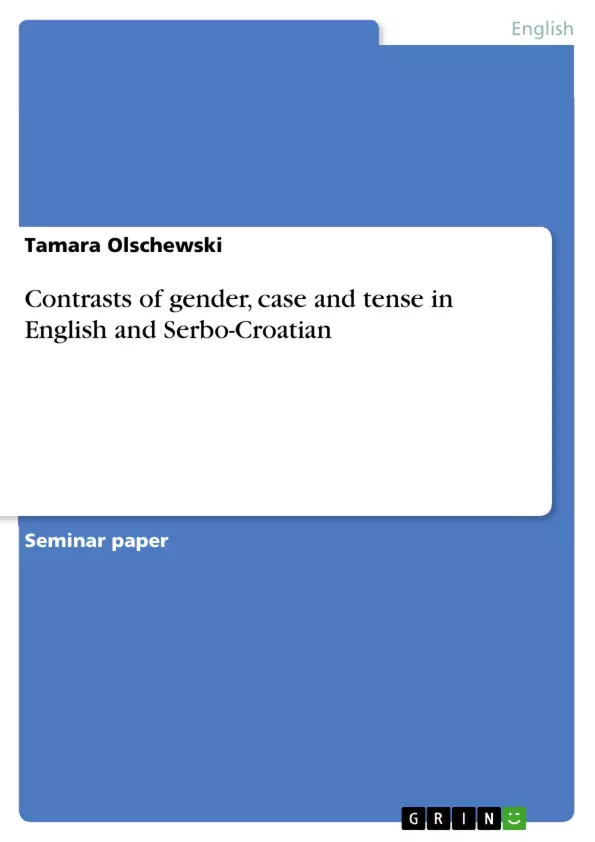"Sociolinguistics is a term including the aspects of linguistics applied toward the connections between language and society, and the way we use it in different social situations. It ranges from the study of the wide variety of dialects across a given region down to the analysis between the way men and women speak to on another. Sociolinguistics often shows us the humorous realities of human speech and how a dialect of a given language can often describe the age, sex, and social class of the speaker; it codes the social function of a language."0
One can assume that in southern countries where women are thought to be more under pressure by men, this might be also expressed in the native language.
Indeed, not only in southern countries but also in numerous European languages three basic facts which express the patriarchal status in most countries are apparent:
- It is obvious that the female gender is semantically of lower range than the male form. In English, "master" indicates a positive connotation while the female form "mistress" indicates something negative. In Italian, "filosofo" means "philosopher" and the female form "filosofessa" stands for "imaginary wife".
- Male forms often are seen as revaluating while female forms are perceived as degrading: "She is man enough to ...", or in German, "Im Beruf steht Birgit ihren Mann." And contrary: "Tom behaves girlish.".
- Male forms that are syntactically or morphologically marked refer not only to a group of men but also to a mixed group of female and male persons. For example, when there are 99 women and one man in a lecture-hall, the male form must be taken as the conventional one. In Germany, for instance, it is not common to say "Liebe Studentinnen".
Inhaltsverzeichnis (Table of Contents)
- Introduction
- Gender in English and Serbo-Croatian
- Grammatical gender
- Natural gender
- Social gender
- Methods of specifying gender
- The word formation of female forms
- Introduction
- Serbo-Croatian
- English
- Grammatical methods
- Tense
- Case
- Lexical methods
- The word formation of female forms
- Methods of gender abstraction
- Grammatical methods
- Laxical methods
- Social and political aspects of language usage
- Language acquisition
- Politics and sex discrimination
- Solutions for a non-sexist usage of language
- Conclusion
Zielsetzung und Themenschwerpunkte (Objectives and Key Themes)
This essay aims to analyze and compare the “femalisation” of words in English and Serbo-Croatian, investigating how each language treats women and whether one is more patriarchal than the other.
- Grammatical gender in English and Serbo-Croatian
- Methods of specifying gender in personality terms, case, and tense
- Use of abstract forms indicating female or male
- Social aspects of language use and the influence of gender
- The impact of social and political factors on language usage, particularly in relation to gender
Zusammenfassung der Kapitel (Chapter Summaries)
- Introduction: Defines sociolinguistics and introduces the main theme of the essay, exploring the potential for language to reflect societal power structures and gender dynamics.
- Gender in English and Serbo-Croatian: Discusses the concept of grammatical gender, highlighting the differences in how English and Serbo-Croatian express gender distinctions through morphological markers.
- Methods of Specifying Gender: Examines the word formation of female forms in both languages, as well as the role of grammatical and lexical methods in indicating gender. This section explores tense and case distinctions and their implications for gender expression.
- Methods of Gender Abstraction: Investigates how grammatical and lexical methods are used to abstract gender in English and Serbo-Croatian, suggesting potential biases in representing gender in each language.
- Social and Political Aspects of Language Usage: Addresses the impact of language acquisition, politics, and sex discrimination on language use. This section also explores proposed solutions for achieving non-sexist language.
Schlüsselwörter (Keywords)
The essay focuses on the intersection of language and gender, exploring key concepts such as grammatical gender, word formation, tense, case, lexical methods, social and political aspects of language usage, and gender discrimination.
- Citar trabajo
- M.A. Tamara Olschewski (Autor), 2001, Contrasts of gender, case and tense in English and Serbo-Croatian, Múnich, GRIN Verlag, https://www.grin.com/document/1768



